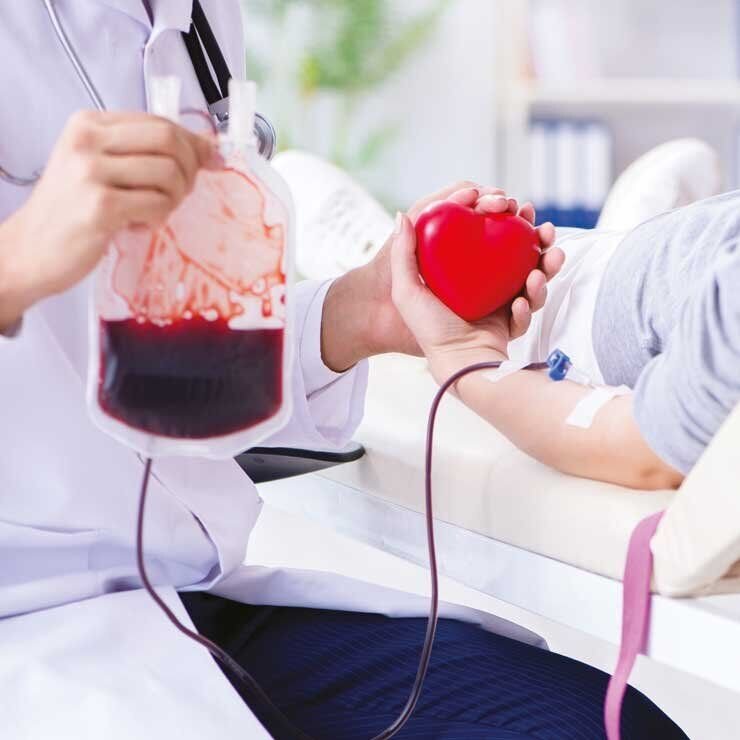IBTO’s achievements at global level

TEHRAN –The anniversary of the establishment of Iran Blood Transfusion Organization (IBTO) on the ninth of Mordad – the fifth Iranian calendar month, which falls on July 30th, is observed as the national blood donation day.
In July 1979, the IBTO was established to organize blood transfusion activities, promote blood donation, and supply safe blood and its products free of charge for patients suffering from diseases like hemophilia, thalassemia, and leukemia.
Iran is the only Islamic country that is a member of the International Society of Blood Transfusion's rare blood donor working party (ISBT WP).
Thanks to a rich culture of selflessness, the country maintains a six-month blood reserve ensuring preparedness for crises.
Blood reserves and their products are considered strategic and vital resources for the country, and voluntary donations help to meet the needs of the country, particularly during crisis.
According to experts adults weigh 50 or more who aged 17 to 65 can donate blood.
Blood donation saves the lives of recipients and ensures the health of donors by facilitating the timely detection of latent diseases.
Healthy individuals can donate blood up to four times a year with an interval of eight weeks.
The main objective of the IBTO is to provide safe, quality blood and its products in accordance with national standards for those in need, as well as to promote blood transfusion medicine
The whole blood can be separated into different blood components to be used for different purposes. Blood components are namely red blood cells (used for anemia or bleeding; platelets (used for bleeding disorders); and plasma (to provide blood proteins).
Heart surgery and organ transplant patients, those suffering from cancer, thalassemia, hemophilia, and acute burn are among those in need of blood.
The IBTO is known as a regional training authority of the World Health Organization (WHO) in blood transfusion medicine.
Moreover, IBTO checks all donors and recipients to ensure their safety and health. Donated blood is tested for HIV, hepatitis B and C, syphilis, and blood cell types.
Conducting nucleic acid testing (NAT), a molecular technique for screening blood donations to reduce the risk of transfusion-transmitted infections; antibody screening to ensure the recipient and the donor's blood are compatible to prevent complications from blood transfusion; as well as genetic sequencing using Next Generation Sequencing (NGS) method for human leukocyte antigens (HLA) to check tissue compatibility and facilitate hematopoietic stem cell transplantation for patients are among the activities that have been put on the agenda of the organization since last year.
On May 15, at the fifth International Congress on Blood Transfusion Medicine, Jaffar Hussain, the representative of the World Health Organization (WHO) in Iran, said the indicators and accomplishments of the IBTO are remarkable and unique in the region and even the world.
Certain departments of the blood transfusion organization are particularly involved in reforming medical and health services, which presents a great opportunity for participating experts from foreign countries to benefit from training courses.
Iran is a member of the WHO and adheres to the WHO's Universal Health Coverage (UHC), which aims to improve health and well-being levels. In fact, the country plays an effective role in promoting UHC.
Iran has adopted UHC as a common goal and strives to provide these facilities for those who do not have adequate access to health or cannot afford treatment costs.
Supplying rare blood groups, nationally and internationally, is one of the country's most effective measures, proving the country's efforts to expand health and medical services in the region.
Being a disaster-prone country, experiencing floods, earthquakes, and other hazards, there is always a need for blood in the country. In this regard, the IBTO has implemented great measures and created many facilities that are very vital.
The average blood donation rate in Iran is 26 per thousand people which places the country in a good situation among other countries.
According to the World Health Organization, the median blood donation rate in high-income countries is 31.5 donations per 1000 people. This compares with 16.4 donations per 1000 people in upper-middle-income countries, 6.6 donations per 1000 people in lower-middle-income countries, and 5.0 donations per 1000 people in low-income countries.
Of the 118.5 million blood donations collected globally, 40% of these are collected in high-income countries, home to 16% of the world’s population.
In low-income countries, up to 54 % of blood transfusions are given to children under 5 years of age; whereas in high-income countries, the most frequently transfused patient group is over 60 years of age, accounting for up to 76% of all transfusions.
Based on samples of 1000 people, the blood donation rate is 31.5 donations in high-income countries, 16.4 donations in upper-middle-income countries, 6.6 donations in lower-middle-income countries, and 5.0 donations in low-income countries.
A total of 2,327,997 Iranians donated blood over the past Iranian calendar year (March 2023-March 2024), an increase of 4.7 percent compared to the year earlier.
Women’s share of blood donation was equal to four percent. A total of 102, 907 women donated blood which had increased compared to the previous year. However, women are expected to get more involved in blood donation.
MT/MG
Leave a Comment